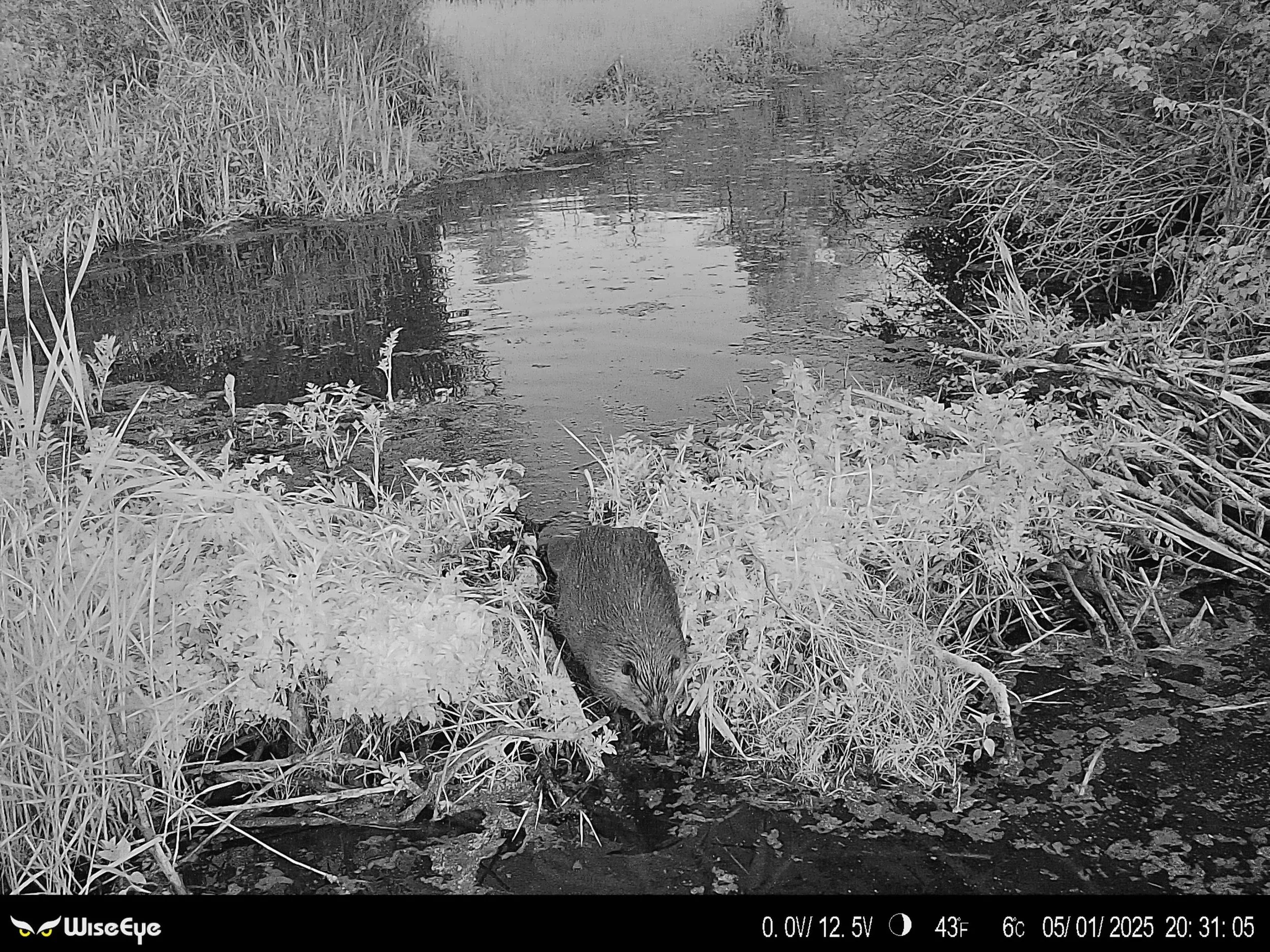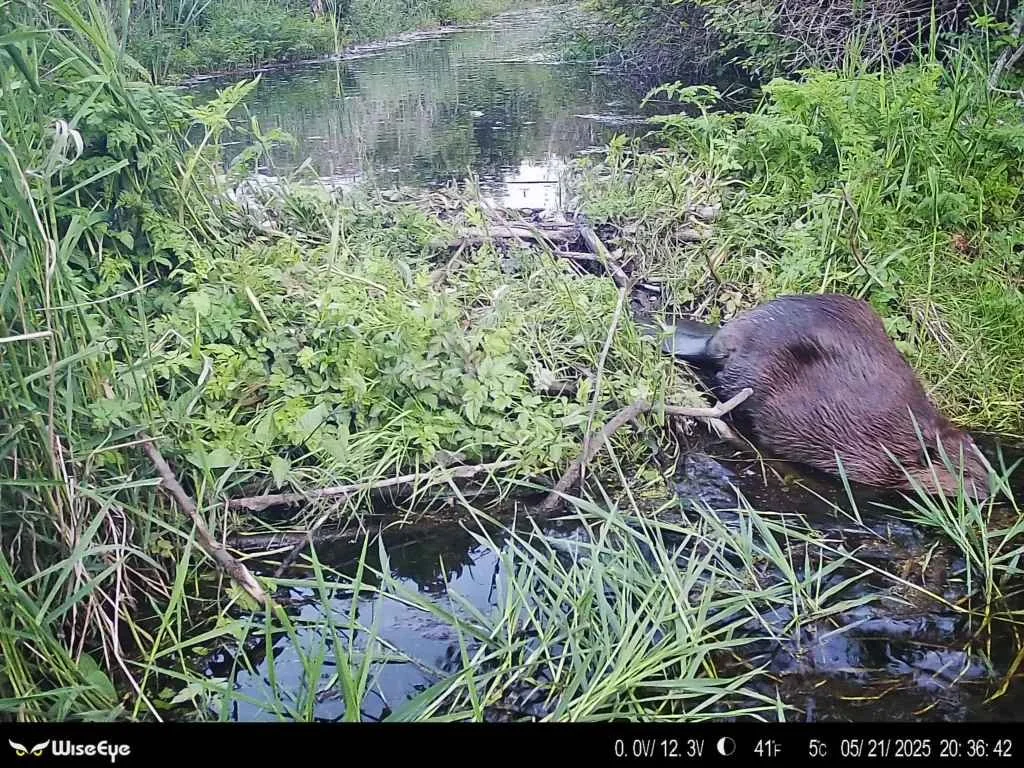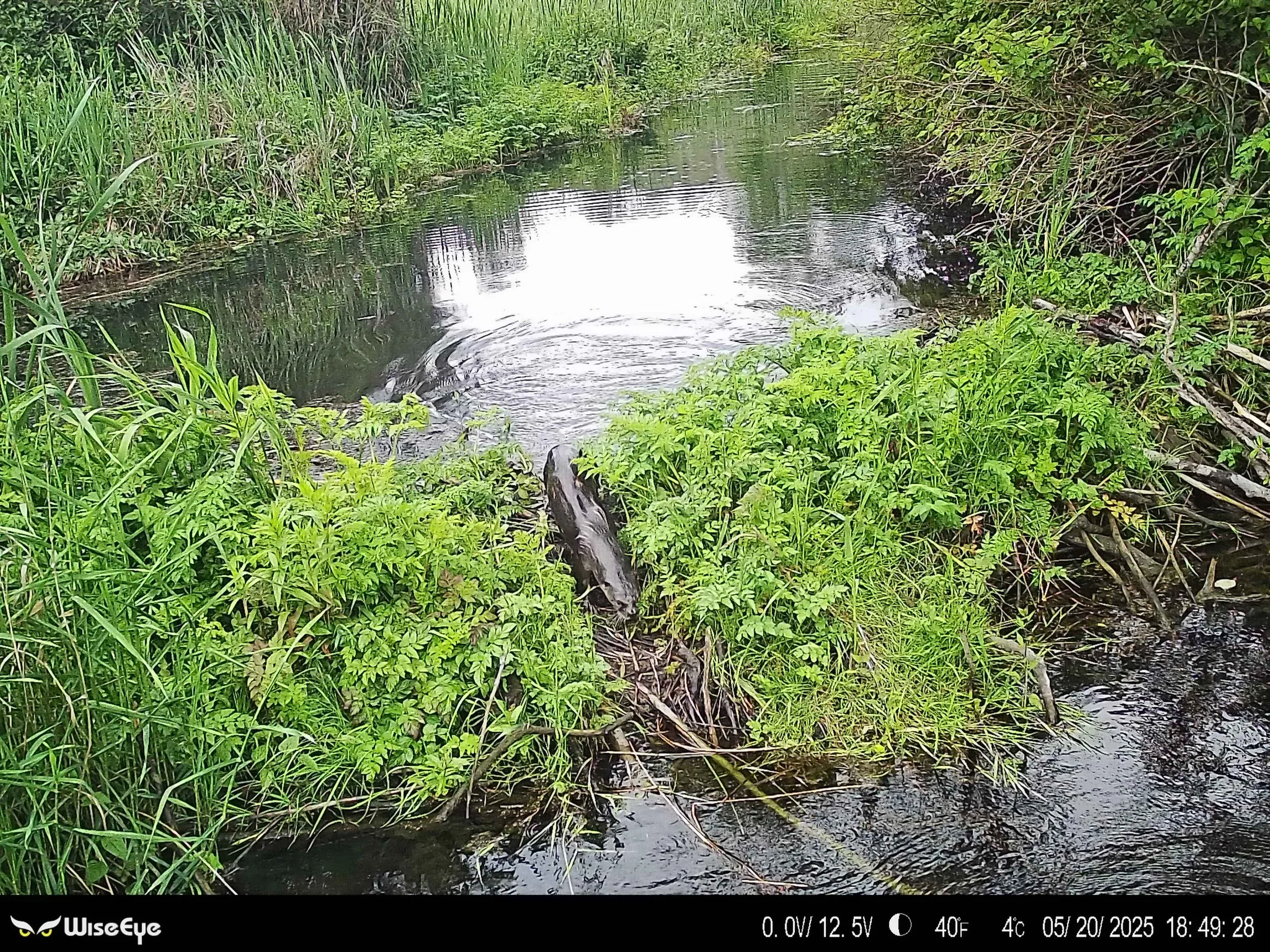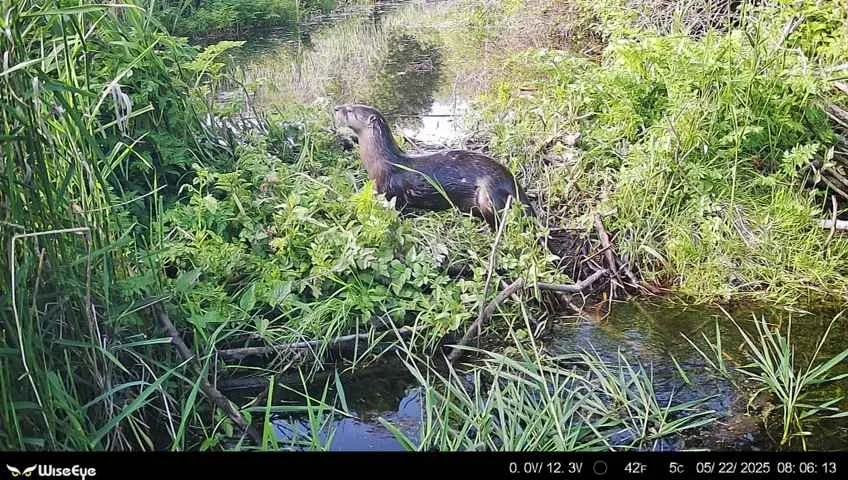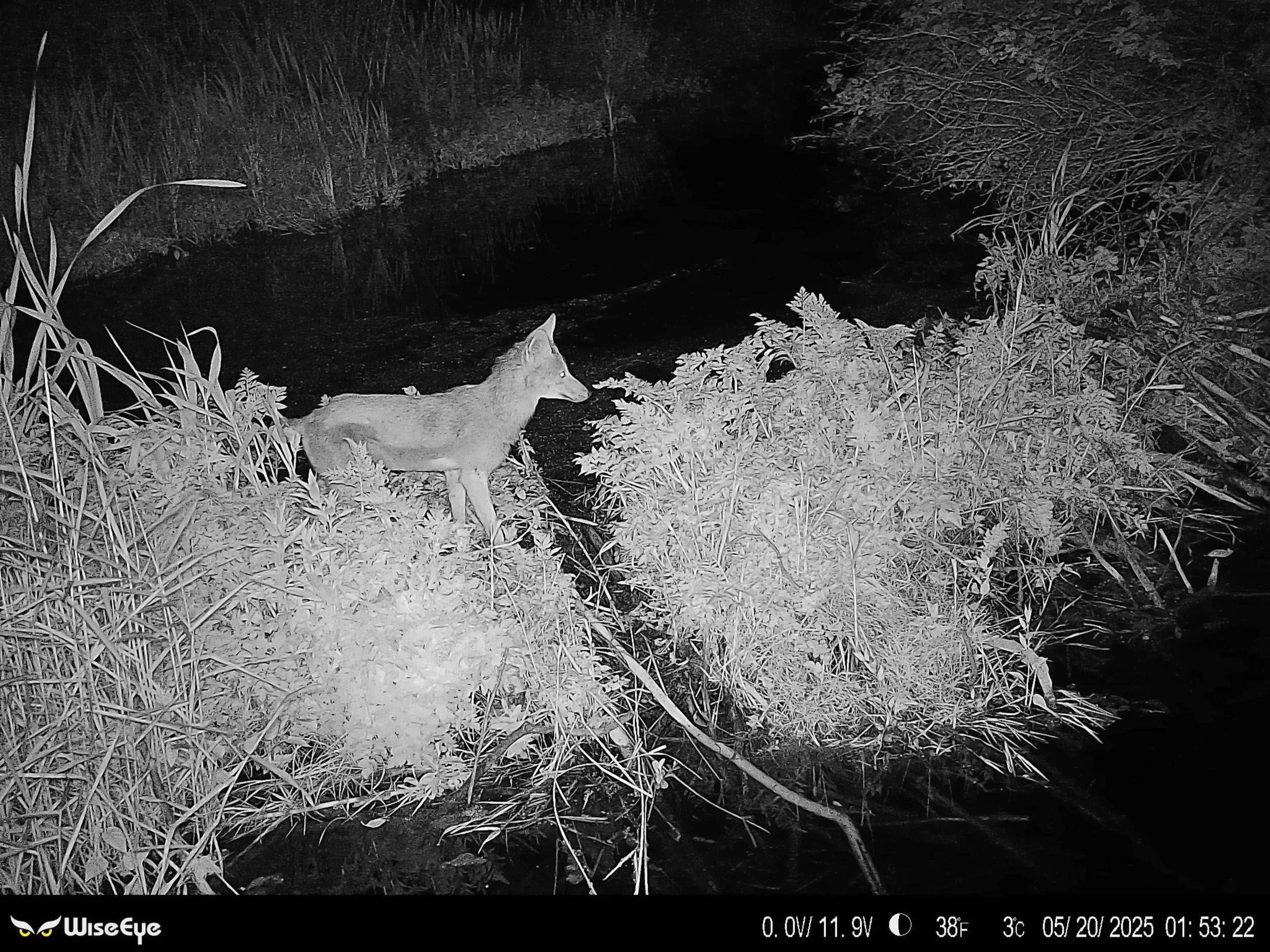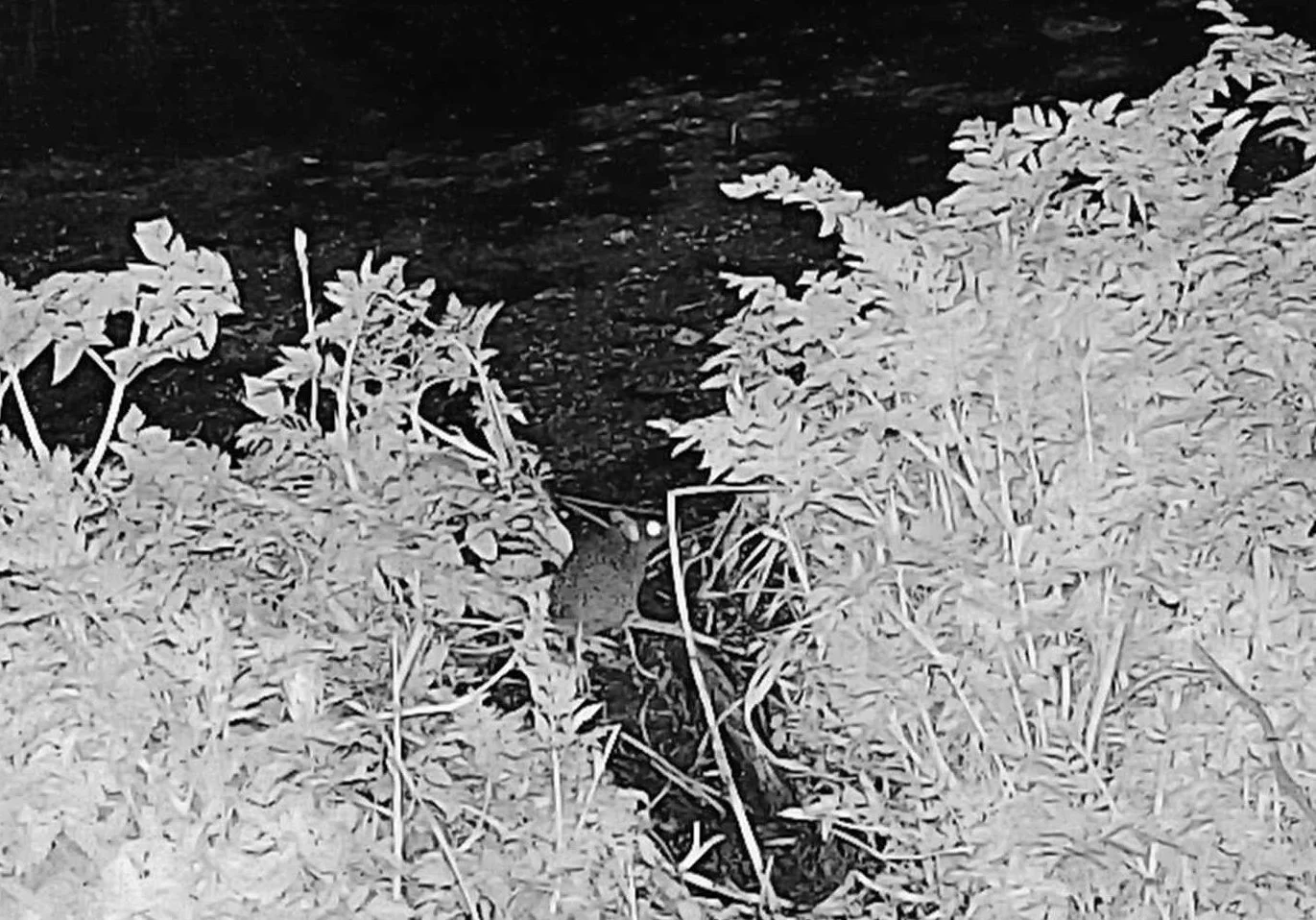PRESENTING: PHOTOS FROM A WILDLIFE CAMERA AT THE EDMONDS MARSH.
(PHOTOS & VIDEOS FOLLOWED BY NOTES ON ANIMALS & IMAGE PRODUCTION)
BEAVER
OTTER
COYOTE
RACCOON
HERON
GEESE AND DUCK FAMILIES
RABBIT
RAT
MORE PHOTOS and VIDEOS HERE
INCLUDING AN OTTER FAMILY AND A MALLARD FAMILY
NOTES ON ANIMALS AND PHOTO PRODUCTION
Marsh Wildlife
Wildlife cameras set up looking at the top of one of the beaver dams in the Marsh show what valuable habitat it is. Multiple mammals and birds are captured every day using the dam. Below is a small sampling of what is going on there.
The wildlife cameras.
Al Snapp and Greg Ferguson set up the cameras. Local wildlife photographer Phil Torres has provided a Wildeye camera, which has a cellular link that sends images to a website where they can be viewed and downloaded. We also met with the very helpful Elyssa Kerr of Beavers Northwest about using game cameras to monitor beaver presence and activity.
The cameras use infrared light at night. This is invisible to the animals being imaged. Only a few species can detect light in the infrared spectrum (think snakes). The cameras also make no sound so the installation does not affect animal activity. Several hours after installation, when night fell, there was a great deal of use of the dam, including by beavers.
Installation is on one of several beaver dams in the Marsh. How many beavers we have is unclear. The first pair probably travelled to Edmonds via saltwater. They have no problem moving through the Sound and people have seen them off the Edmonds coast.
Marsh Beavers
The beavers that are moving across the dam do so mostly during the night. There are multiple trips, up and down between 9pm and 4am, sometimes outside these hours. The first movement of the evening is downstream and the last is upstream.
The beaver photos show examples of this. One is of an animal with a huge mouthful of vegetation going upstream. To be used for what, maybe food for kids?
Beavers are notoriously hard to differentiate and even to sex. Apparently the best way is to smell them, males smell like motor oil and females like old cheese. This will remain untested.
Because they look so similar it is not clear if more than one is using the dam. Based on an up/down/up/down/up/down pattern it appears that it is mostly just one.
Beaver dams will not prevent upstream adult salmon migration in the Marsh. These species spawn in the late fall and early winter when storms increase flows, water levels are high, and beaver dams would be passable. Restoration advocates hope to return Chum and Coho to streams feeding the Marsh.
Also, the dams do not cause stormwater to back up onto Dayton Avenue during floods. From elevation data (LiDAR) it can be seen that the tops of the dams in the Marsh are well below high flood levels. During flood events the dams are submerged, and water flows over their tops.
Another benefit to having beavers in the Marsh is that they eat aquatic vegetation, not just deciduous tree bark. Plants are an important part of their spring and summer diets. An aspect of this is that records (DNA tests on collected poop samples described Beavers: Ecology, Behavior, Conservation, and Management) show that they eat invasive plants like bittersweet nightshade, canary grass, loosestrife, and Japanese knotweed, all problems in the Edmonds Marsh.
Other beaver notes (from a Beacon article Beavers in Edmonds)
Beavers are making a comeback in North America and also right here in Edmonds. Washington State has been a leader in this comeback due to our anti-trapping and dam removal regulations.
One estimate was that before people decided that beaver hats were cool, there could have been up to 400 million of these ecosystem engineering rodents. The straight, free flowing streams that we take for granted today were once not so common. Stream and river valleys were a series of ponds and lush, green wetlands. An interesting book, Eager: The Surprising, Secret Life of Beavers and Why They Matter, describes what the world infested with beavers would have looked like.
There is only a small fraction of their historic population left, but numbers are increasing. Washington State has been a leader in this comeback due to our anti-trapping and dam removal regulations.
Is their comeback a good thing? The clear answer to that question is yes. Their ponds limit flood damage by retaining stormwater, cool streams by recharging groundwater aquifers, provide critical salmon habitat, and improve water quality. What’s not to like?
Well, there is one thing. They don’t consult us about where they build dams. They don’t apply for any of the appropriate permits, don’t complete a risk analysis, and don’t attempt to arrive at community consensus.
Beaver dams on road culverts are a problem. New advances for systems that discourage these kinds of blockages are helping reduce damage. Large cages around culverts and pipe extensions are being used successfully and even have a catchy name, beaver deceivers.
One last thing, beavers are stormwater engineers, their ponds store and help treat flood flows. We need beavers in the Shell, Shellabarger, Willow, and Perrinville watersheds. They could build a treatment system, all at no cost to the taxpayer.
Beavers are a keystone species, can we live with them in Edmonds, can we encourage their spread and figure out how to live with them?
Marsh Otters
Otters have been photographed several times, they make occasional use the dam. It was very nice of one of them to pause on top of the dam in broad daylight and to strike a pose in profile. The movie shows that otter looking intently downstream and when hearing a sound, moving upstream and diving below the pond surface.
Otters eat primarily slow moving fish (like sculpin) and crustacea (like our native crayfish). There is apparently enough of this kind of food in the Marsh to attract them. This is a river otter, smaller, darker and not sending time on its back as a sea otter. We do not have sea otters in central Puget Sound (yet). River otters also migrate freely in the Sound and can enter the Marsh overland (across the railroad tracks?)
The other animals
Herons, coyotes, raccoons, squirrels, ducks, and even a rat have been photographed.
The Canada goose family spends a lot of time on the dam and they trip the camera over long periods with many photos. It will be nice when the goslings grow up and move out. There is a movie of them with a duck family in the background. The two families seem to be together quite a bit, maybe for mutual protection.
The coyote is a fairly frequent visitor. It does a lot of sniffing on the dam, probably dreaming of all the good food that passes across it. There may be a den on the nearby hatchery parcel.
The Marsh is a busy place. We are lucky to have at least a little wild habitat in our front yard.
Have questions? Fire away to: marshestuaryadvocates@gmail.com
References:
* Eager: The Surprising, Secret Life of Beavers and Why They Matter, Ben Goldfarb, 2023. Available on order from the Edmonds bookstore (read this at your peril, you will become a beaver believer….)
* Beaver in Tidal Marshes: Dam Effects on Low-Tide Channel Pools and Fish Use of Estuarine Habitat, Wetlands, 2012
* Beavers: Ecology, Behavior, Conservation, and Management, Frank Rosell, Róisín Campbell-Palmer, 2022. This book is hard to get but includes a vast amount of information about beavers.
• The Importance of Beaver (Castor Canadensis) to Coho Habitat and Trend in Beaver Abundance in the Oregon Coast Coho ESU, ODFW, 2005 (more beavers = more salmon)
